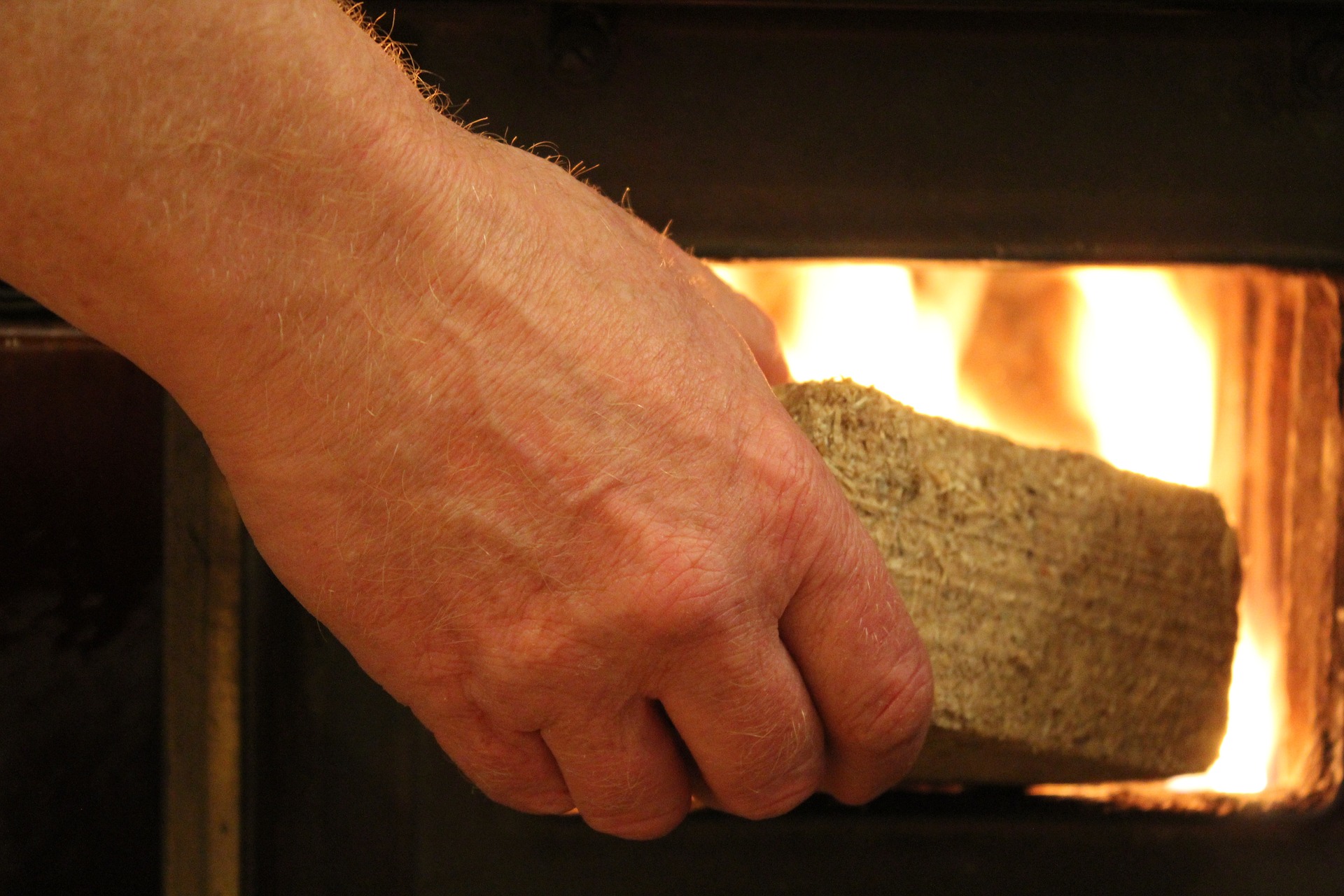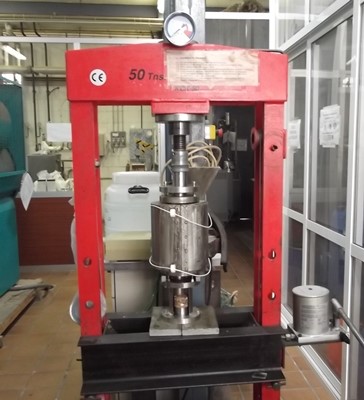Can we help you?
Contact us

Can we help you?
Contact us

Thank you for contacting us
Your form has been submitted successfully Our team will contact you again as soon as possible.
Whooppss...!! An error has occurred
Try sending later or write an email directly to areaempresas@ua.es

 PATENTED TECHNOLOGY
PATENTED TECHNOLOGY
INFO
SHEET
DOWNLOAD
EXECUTIVE
ABSTRACT
CONTACT DETAILS: Research Results Transfer Office-OTRI
University of Alicante
Tel.: +34 96 590 99 59
Email: areaempresas@ua.es
http://innoua.ua.es
The research group, " Wastes, Energy, Environment and Nanotechnology ", belonging to the University Institute of Engineering of the Chemical Processes (WEEN-IECP) at the University of Alicante, has developed a new compacted material and the procedure for manufacturing briquettes from mattress wastes (flexible polyurethane foam, latex foam and viscoelastic foam).
In view of the high calorific values of these wastes, these briquettes can be used as fuel product for industrial use, allowing their energy recovery giving hereby a solution to the build-up of mattresses in landfills. Likewise, this process would improve their transport, manipulation and storage. In addition, the fact that the conditions for the obtaining of the briquettes are not very extreme, this system could be placed in the landfill’s facilities.
Companies in the mattress waste management sector, landfills or other private entities interested in the commercial development of this technology through license agreements and / or technical cooperation are sought.

The term briquette is related to biologically derived fuels obtained from organic wastes (biofuels), since these products are usually made using only biomass; nevertheless, the briquettes can be made of different materials, such as: almond shells, coke (carbonaceous materials), lignocellulosic materials (sawdust and wood), metallic residues, wastes from the food processing industry, polymeric materials, mineral products and deinking residues proceeding from the recycling paper sector.
Up to the date, no references considering the manufacture of briquettes from only polymeric materials have been found. However, there exist briquettes obtained from plastic wastes and biomass mixtures, being the proportion of these plastic wastes in these briquettes very limited.
On the other hand, the use of polyurethane (PU) foam wastes from the automotive industry has been used for the manufacture of a composite fuel ("Eco-fuel"). The problem of this solution is that the production of these briquettes is performed with high operative costs and conditions that suppose a big handicap when applying this procedure.
Other sources of PU's foam wastes are mattresses out of use. Nevertheless, their management is difficult due to their high volume and to their non-biodegradability. Therefore, they are inadequate to send to landfill. Likewise, their low density makes difficult their transport to incineration plants, where they might be used as fuel because of their high calorific value. In addition to the transport problem, there exist other risks related to the direct combustion of these wastes. All these facts cause that this type of management is not adequate for these wastes.
At present, PU's mattresses dominate the selling market of mattresses with 42% of the total production, though the awaited trend is an increase in the demand of latex foam and viscoelastic foam mattresses.
Consequently, a solution must be provided to carry out the energy recovery of the PU's foam, latex foam and viscoelastic foam wastes. The research group WEEN-IECP at the University of Alicante have analyzed both the briquetting of only PU's foam to cover the current needs, and the mixtures of PU's foam with the latex foam or the viscoelastic foam, taking into account the evolution of the market.
The research group WEEN-IECP at the University of Alicante has developed a new compacted material and a process for manufacturing briquettes with high energetic value in order to carry out the energy recovery of PU foam wastes mainly from mattresses out of use, through an appropriate and viable form.
In spite of the flexible character of these materials, which clearly makes difficult their compaction, high quality resistant briquettes have been obtained by means of suitable operating conditions and without addition of any type of adhesive or synthetic or natural binder agents. Both, homogeneous briquettes (using only PU foam as initial material) and heterogeneous briquettes (from PU foam and latex foam or viscoelastic foam mixtures) have been obtained.
The procedure for manufacturing the briquettes includes the following steps:
a) Grinding of the mattress wastes used to a certain size (Figure 1);
b) Preparation of the press and the material of the stage a): warm-up of the compression cell (between 160 and 190ºC); and,
c) Pressing of the material obtained in the stage b) to a certain pressure during 2 seconds, approximately, to obtain a briquette (Figure 2).
During the laboratory test programs, the physical-chemical parameters with major influence on the characteristics and mechanical resistance of the obtained briquettes have been studied: temperature of the compression cell, warm-up time and compaction pressure. In addition, in the case of the heterogeneous briquettes, different percentages of mixture (flexible PU foam and latex foam, or flexible PU foam and viscoelastic foam) have also been studied.
By means of this procedure, 5 cm diameter and 2 cm height briquettes have been obtained. Nevertheless, the procedure is applicable to briquettes of any size. Likewise, the briquette can have any type of form: brick, cylindrical, tablet, square or similar.


The present invention can be adapted so that the entire mattresses could be introduced in a hopper feeding a continuous system for grinding the material without requiring the modification of the raw material moisture.
The implementation of this system would eliminate the problem related to the great volume wastes build-up in landfills, obtaining a fuel product with a high calorific value at the same time. The solid residue after the combustion is practically zero, so it might be very interesting for industries.
The main advantages of this technology are:
• The process allows the treatment and energy recovery of these wastes by a simple and viable form avoiding the environmental problems related to their disposal in landfills.
• The material densification in the shape of briquette makes transport, manipulation and storage of these wastes easier and cheaper.
• The obtained briquettes have high calorific values (density data based on net calorific value: Flexible PU foam briquette = 13279 MJ/m3; 90 % flexible PU foam + 10 % latex foam = 12666 MJ/m3; 82 % flexible PU foam + 18 % viscoelastic foam = 12889 MJ/m3)
• The briquettes can be used as fuel in boilers and power plants.
• This process can be applied for briquettes of any size and form.
The main innovative aspect of this technology is the manufacture of briquettes with high energetic value from polymeric materials with low operative costs and feasible operating conditions.
The manufacturing process has been proved successfully at laboratory scale. The Institute has performed tests with different operating conditions: temperature (160 - 190ºC), warm-up time and compaction pressure (240 - 370 kg/cm2). In addition, in case of the heterogeneous briquettes, different mixtures with PU foam have been studied with latex foam (10-25 % of latex foam) or viscoelastic foam (10-25 % of viscoelastic foam).
As result of these studies, both homogeneous and heterogeneous briquettes, showed good mechanical resistance properties, as a consequence of being a solid strong block. Besides, it can be concluded that the higher pressures and compression times more compacted briquettes were obtained, but with higher production costs.
These tests were carried out with a hydraulic piston pressing machine (Figure 3).

Figure 3. Briquetting machine.
The briquettes obtained by means of this procedure can be used as fuel in industrial boilers and industrial furnaces.
In addition, the pressures and temperatures to carry out the process of compaction are not excessively high, so this system might be implemented in landfills where the material is preheated from the residual heat of the combustion engines, using the biogas and even the water steam generated can be used to move the hydraulic system to compact the material with the selected pressure.
Waste management companies or landfills interested in the technology exploitation through:
• License agreements of the patent granting rights of use, manufacture or commercialization of the technology to third parties.
• Research and development projects (technical cooperation agreements) for the utilization of the technology or application in other wastes or sectors.
• Subcontracting agreements (technical assistance, training, etc.)
This technology is protected by granted patent.
• Title of the patent: " Procedure for manufacturing briquettes from flexible PU foam with latex foam or viscoelastic foam"
• Patent application number: P201531827
• Patent application date: 12/17/2015
Materials and Nanotechnology
Carretera San Vicente del Raspeig s/n - 03690 San Vicente del Raspeig - Alicante
Tel.: (+34) 965 90 9959




